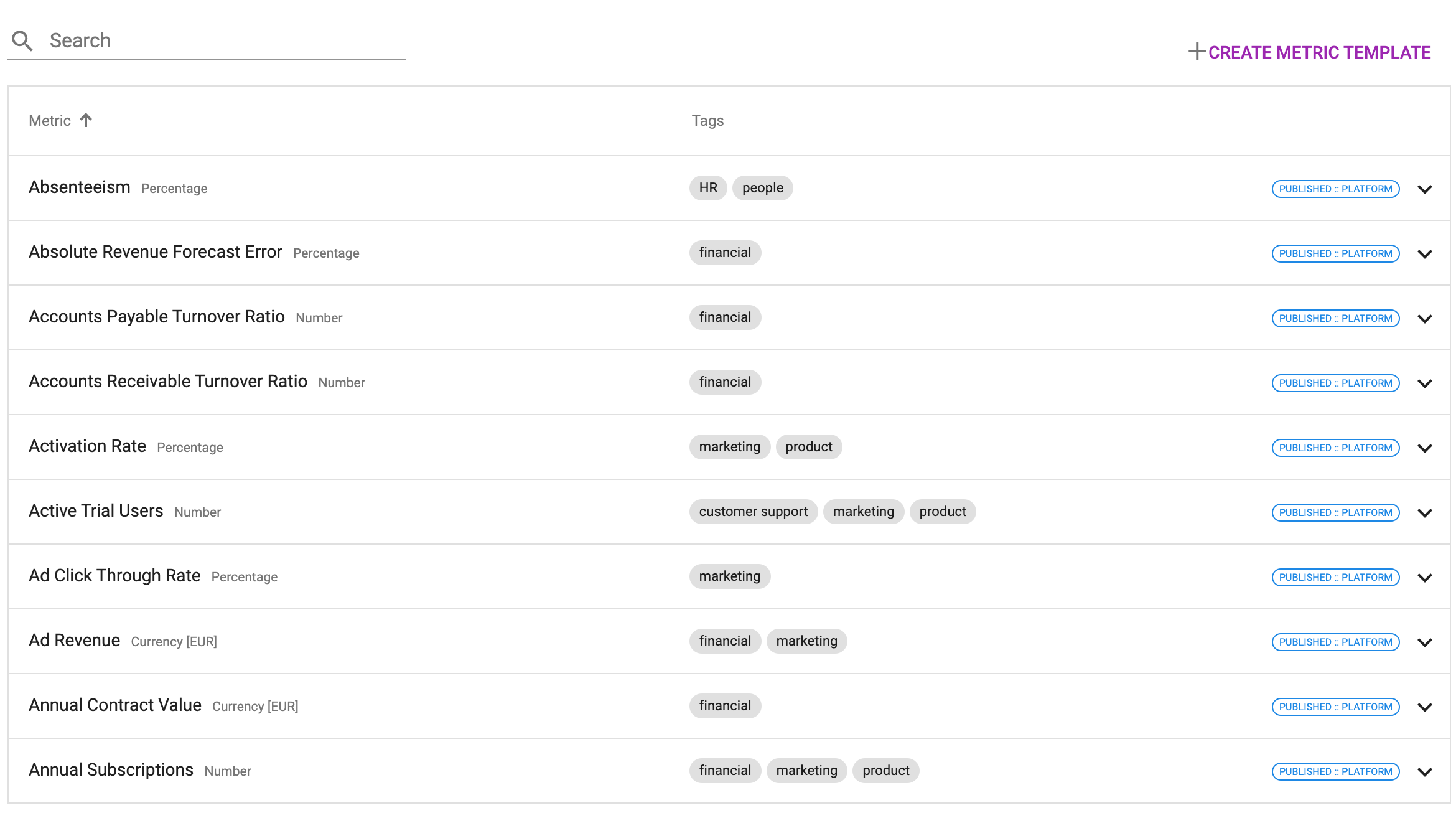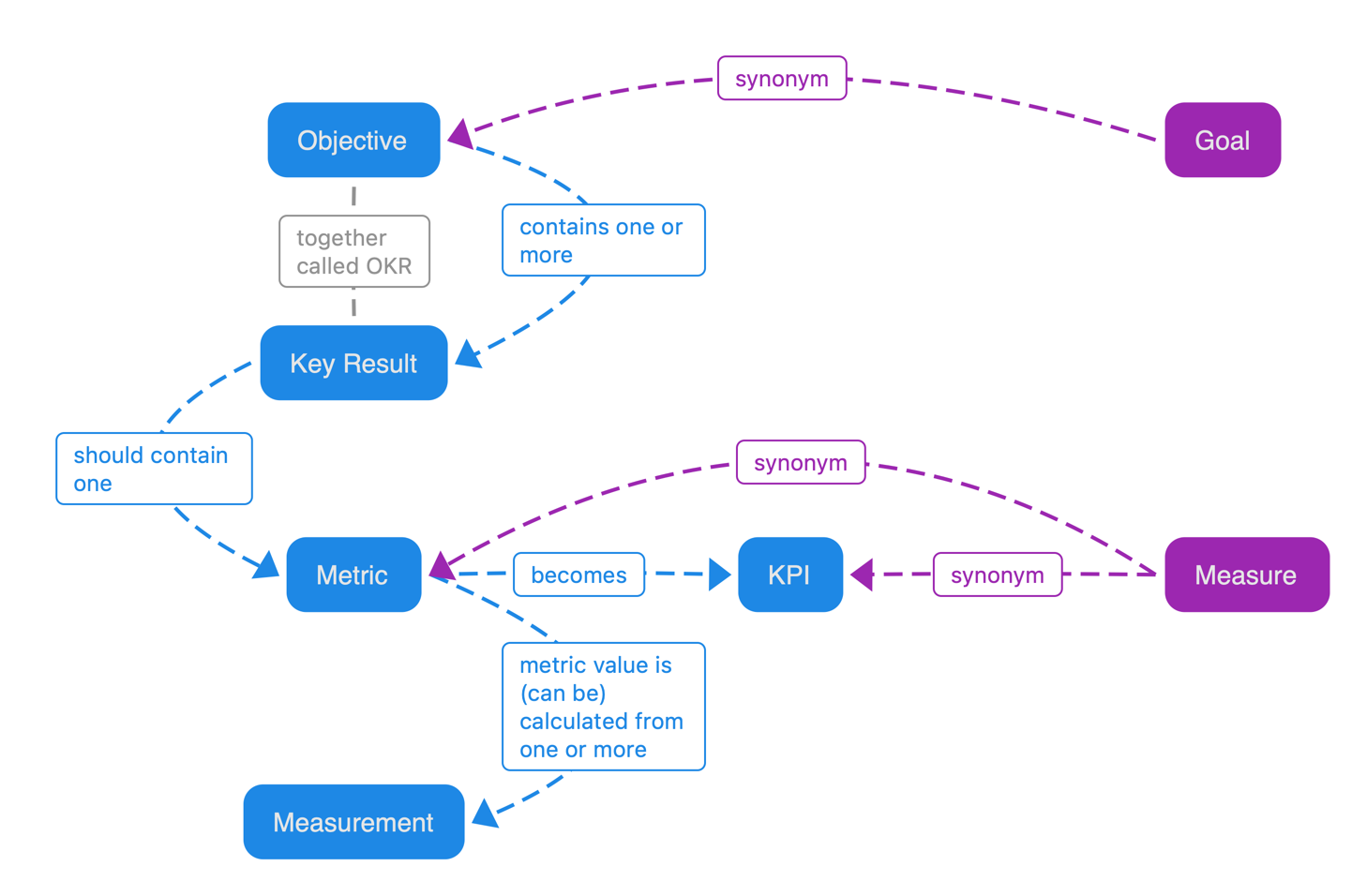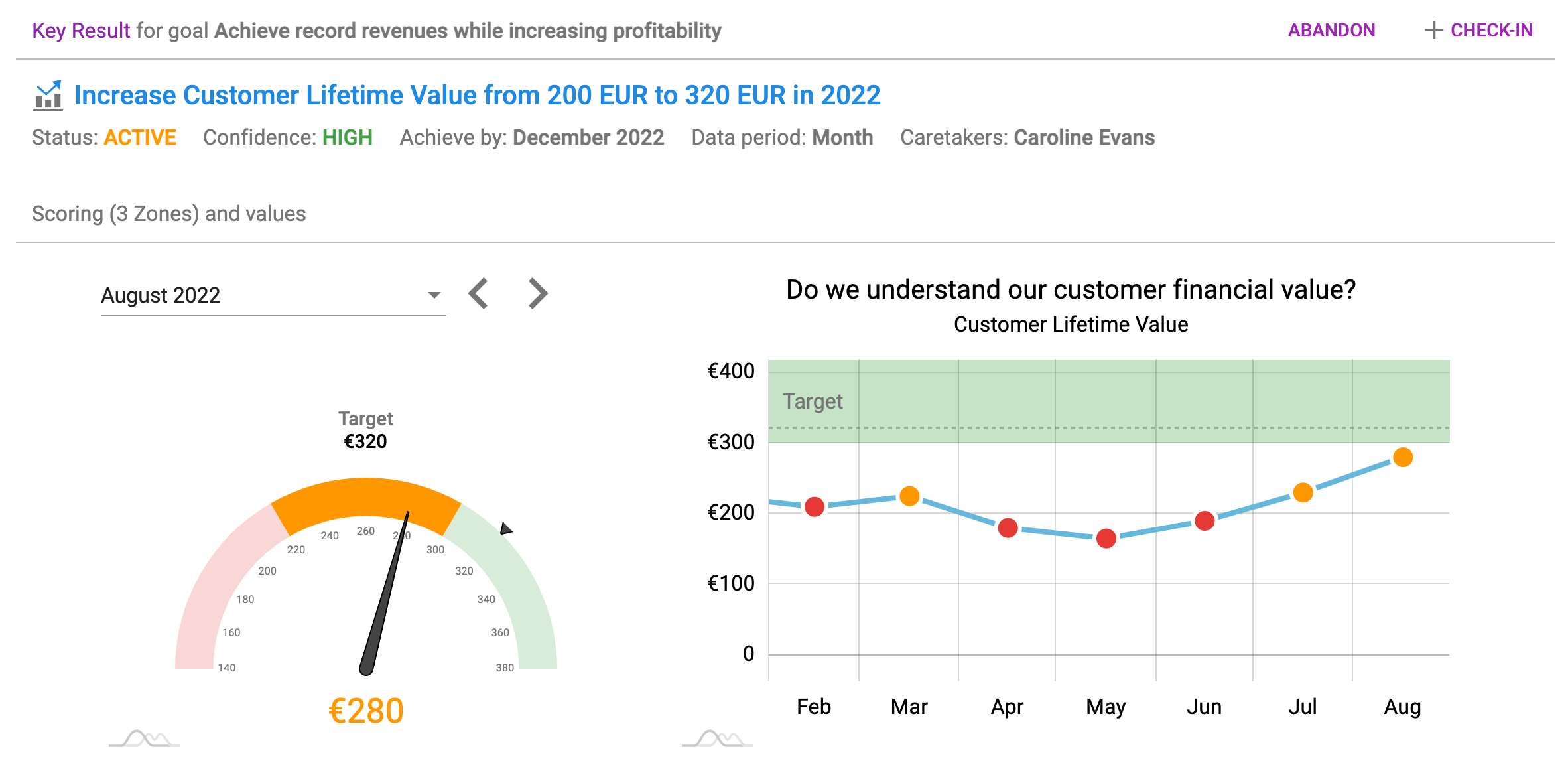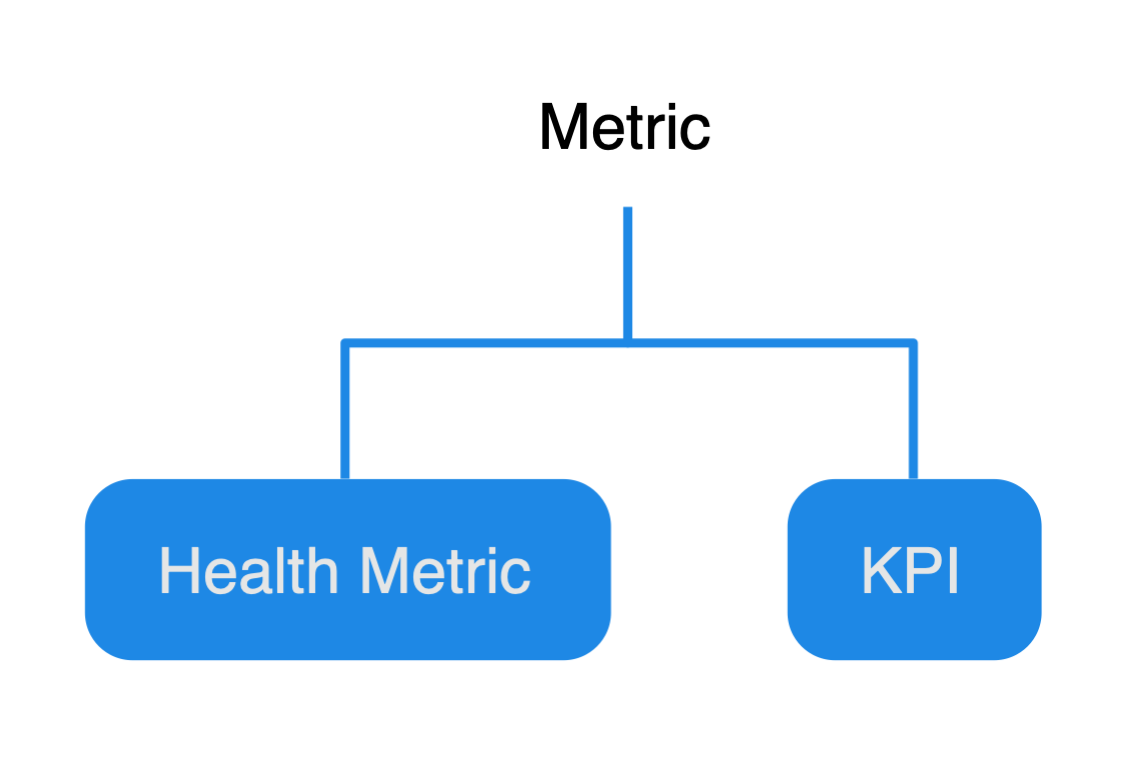First things first, one must know the difference. Before you begin with OKRs, you should invest some time into this subject.
Using both systems in parallel is advisable, so it is not a question of whether they are mutually exclusive but how to integrate them. KPIs (Key Performance Indicators) and metrics are the foundation on which we build our Key Results.
What is a Metric, and what is a Key Performance Indicator?
Let's begin with an image of the Agile Tools library of Metrics.

Many metric templates are available for Agile Tools customers, an ever-increasing list for you to choose from when drafting your OKRs.
It is easier to explain correlations between concepts with an image.

As you can see, metrics and KPIs play a significant role in the OKR world. We encourage creating Key Results based on metric templates from the library.
Once a metric becomes part of a Key Result, and when that Key Result is published, the values you provide for this Key Result during Chek-ins are actually metric values. And since a Key Result is "active" for a specified period, you can say that, as a concept, the metric has become a KPI.
Also, every Key Result has a caretaker, someone that is responsible for providing the data, the measurements, the values. When you create a Key Result, you agree on scoring. Defining scoring is defining thresholds, also a target value. Therefore, all the criteria for a metric to become a KPI (again, as a concept) are met.

The image above is a Key Result detail page. You can see that this Key Result
Increase Customer Lifetime Value from 200 EUR to 320 EUR in 2022
includes a metric (in bold) for which you now provide the data, metric values, measurements.
The bridge between OKRs and KPIs
Since metrics have a life of their own, you can now view the metrics themselves without the Key Result. This is very important as this establishes the bridge between the OKRs and KPIs.
When talking about metrics outside of the OKR context, then you can also distinguish between so-called Health Metrics and KPIs.

Health metrics are all we observe but are not crucial in this period and have no targets, just thresholds. When values fall out of those preset boundaries, we often set alarms to go off. And that is precisely the moment when we start walking back on that bridge from KPIs to OKRs. We create a Key Result based on that alarm-triggering health metric as we want to bring it in the green values (again).